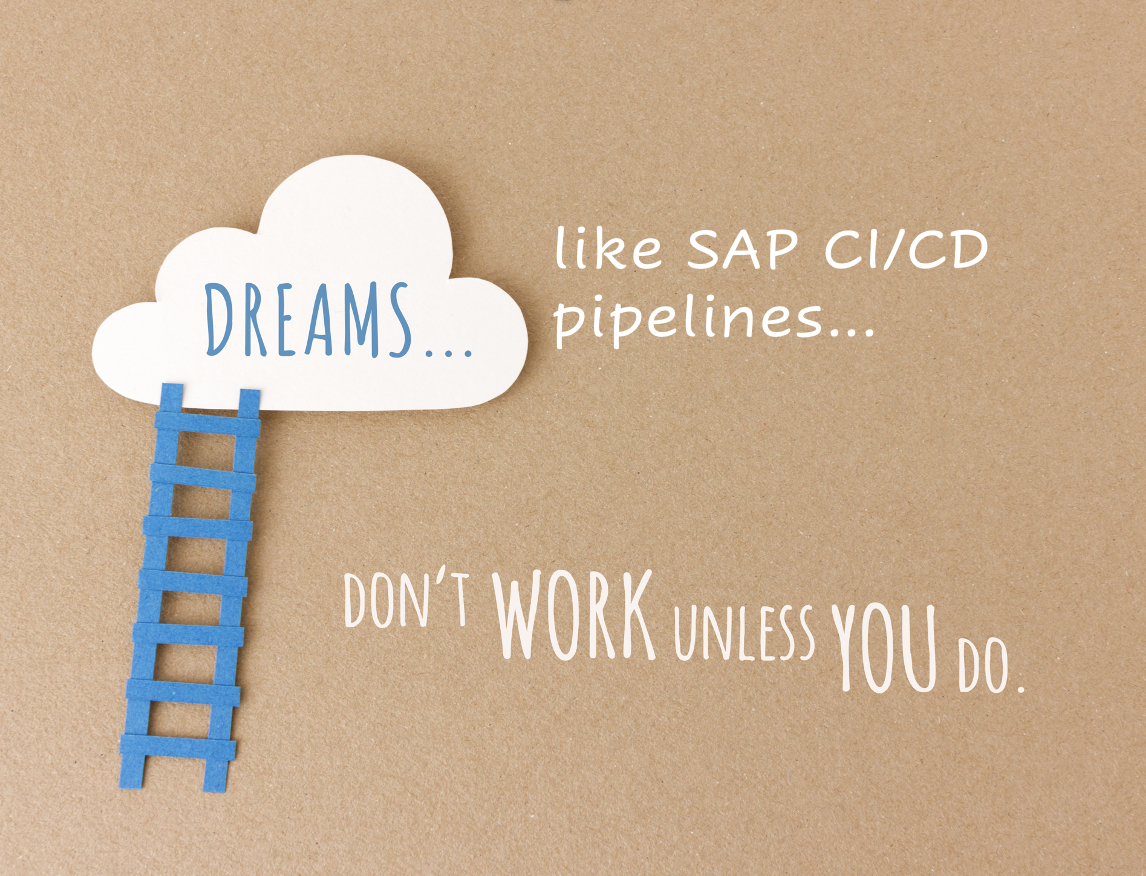
2023-12-17 05:1:24 Author: blogs.sap.com(查看原文) 阅读量:12 收藏
Implementing a CI/CD (Continuous Integration and Continuous Deployment) process for SAP developments is a significant undertaking that requires careful planning and consideration. Think how many companies using SAP you know that have successfully implemented it before your organization and try to understand why they managed to do it before you embark on the journey. Below you will find a few questions one might try to answer before saying out loud: “We’re planning to introduce an CI/CD process to our SAP developments”.

“When I stop asking questions, something’s wrong – Rene Marie”
What are the business goals and objectives?
Start by understanding the overarching business goals and objectives that the CI/CD process should support. What are you trying to achieve with this initiative, and how will it benefit your organization? Something that will always keep you moving forward even if you are faced with a big blocker (no understanding of some parts of your organization, lack of processes, etc.). This will also help you get executive support (more on this later).
What SAP systems and landscapes are involved?
Identify the specific SAP systems (SAP S/4HANA or maybe some parts of SAP BTP only) and landscapes (e.g., development, quality assurance, production) that will be part of the CI/CD process. Are there any third-party integrations or dependencies (if yes – openSAP).
What are the current development and deployment processes?
Validate the existing development and deployment processes for SAP. Do they exist? This will help you identify pain points and areas for improvement. What SAP development technologies and tools are in use? Will they support all CI/CD processes in all parts of SAP development or only in certain? Maybe you plan to use a general-purpose CI/CD solutions (which can work with SAP and non SAP technologies).
What is the size and skillset of your development team?
Assess the size and skillset of your development team. How much do you use Service Integrators or freelancers? Are they familiar with CI/CD practices (my best guess would be no) so they will additional training be required. How much of this training will be required?
Are there compliance and regulatory requirements?
Do you work in a regulated industry where some special practice needs to be validated (GxP for pharmaceutical industries)? Are there any other requirements that need to be considered in your CI/CD process, such as GDPR, SOX, or industry-specific standards.
What is the current testing and quality assurance process?
Here we start with a simple one: how mature are you with automated testing of your SAP developments? Are you aware that continuous deployment and continuous delivery includes continuous testing being run first on all of the parts of the process which you want to include in the CI/CD pipeline? Develop a comprehensive testing and validation plan to ensure that changes introduced through CI/CD do not negatively impact SAP functionality and data integrity.
What are the risks and challenges associated with a CI/CD process for SAP?
Identify potential risks and challenges that may arise during the implementation of CI/CD for SAP developments. This could include system refreshes, system downtime, or data migration issues.
What CI/CD tools and technologies will you use?
Select the CI/CD tools and technologies that are best suited for SAP development. Consider tools for version control, automated testing (like Int4 Suite for SAP BTP Integration Suite), and deployment automation.
What is the deployment strategy?
Define your deployment strategy, including how and when new SAP developments will be deployed to different environments (e.g., dev, test, production).
What is the timeline and budget for implementation?
Develop a timeline and budget for implementing CI/CD for SAP developments. Consider both the initial setup costs and ongoing maintenance expenses.
What is the rollback and disaster recovery plan?
Have a plan in place for rolling back changes in case of issues and a disaster recovery plan to mitigate risks associated with CI/CD.
Do you have executive support and sponsorship?
Ensure that there is executive support and sponsorship for the CI/CD initiative, as it may require changes in processes and investments in technology and someone needs to have your back when others will ask “do we really need it, old process was working just fine”.
Final thoughts
If you don’t know any SAP companies using a full blown CI/CD process don’t worry – you don’t need to change the whole world, there’s plenty you can still do:
- You can find out companies who at least try – SAP User Groups, SAP Events (like SAP Teched)
- You don’t need to implemented this for the whole SAP landscape at one, maybe start with something small (SAP BTP might be good frontrunner)
- Don’t give up – CI/CD process is a very well-known practice outside so it’s nothing new
Good luck!
如有侵权请联系:admin#unsafe.sh